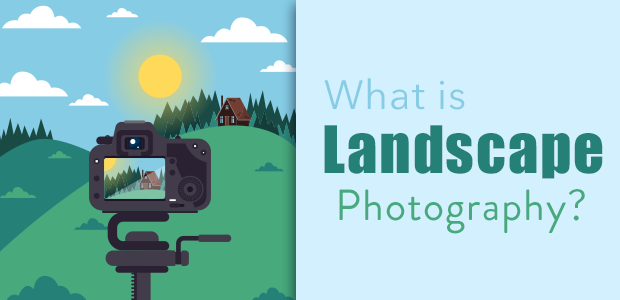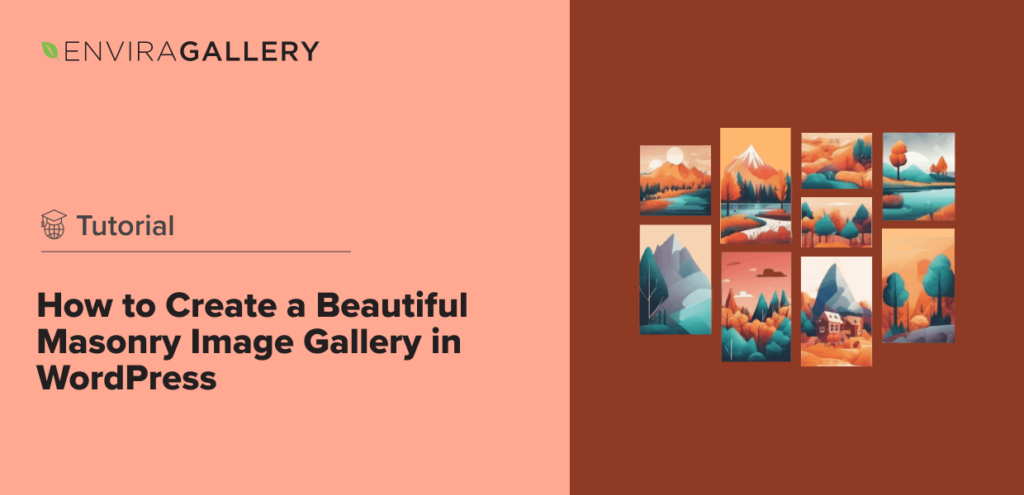Landscape photography costs little compared to studio photography and it doesn’t require expensive lighting, gear or models. No wonder it’s one of the most popular forms of photography today! To be a landscape photographer, all you need is a camera, tripod and a location — anywhere between your backyard or another country!
Today, we’ll look extensively at landscape photography. Topics we’ll cover include:
- Different types of landscape images
- Equipment needed for landscape photography
- Challenges involved in landscape photography
- Learning more about landscape photography
Hopefully you’ll come away from reading this article with the knowledge and inspiration to get out and about with your camera. Let’s jump right into it!
Elements of Landscape Photography
At its most basic, landscape photography means capturing images of the landscape around you. That can be sweeping vistas of mountains and forests, urban cityscapes, abstract close-ups or even seasonal flowers at your local park.
Let’s look at different types of landscape images to get a better idea of what the genre entails.
Impressionistic Landscape Photography
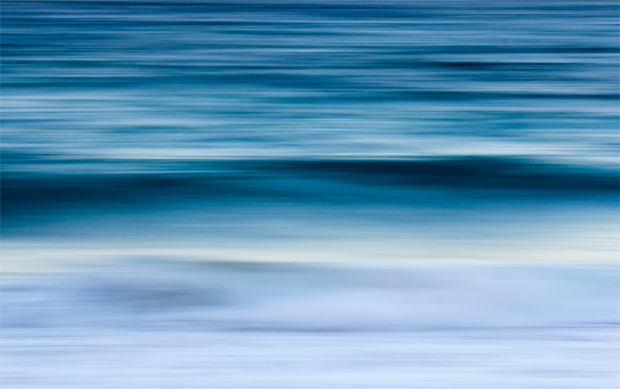
This type of landscape photography is a great one to try if regular landscapes aren’t your thing. With impressionistic landscape photography, there are no rules. The goal isn’t to capture the landscape as it is, but to transform it into a feeling with your camera. And, you don’t even need a tripod!
Unlike traditional landscape photography, impressionistic images are characterized by their dreamy, painterly appearance. To create impressionistic landscape photography, you might move the camera while the shutter is open to create motion blur. You could also use slower shutter speeds and a variety of other techniques.
Primarily, you’ll want to avoid capturing sharp lines and the crispness usually characteristic of traditional landscape photography.
Speaking of which…
Traditional Landscape Photography

You’re probably most familiar with traditional landscape photography. Think of crisp, sharp images of mountains, lakes, rivers and forests. This form of photography began with the work of Ansel Adams, and it’s only continued to grow more popular since.
Traditional landscape images usually require a wide-angle lens, tripod and perhaps polarizing filters or graduated filters to better capture the light. Compositional techniques like the rule of thirds are also used, which helps to create a visually interesting and balanced scene.
Abstract Landscape Photography
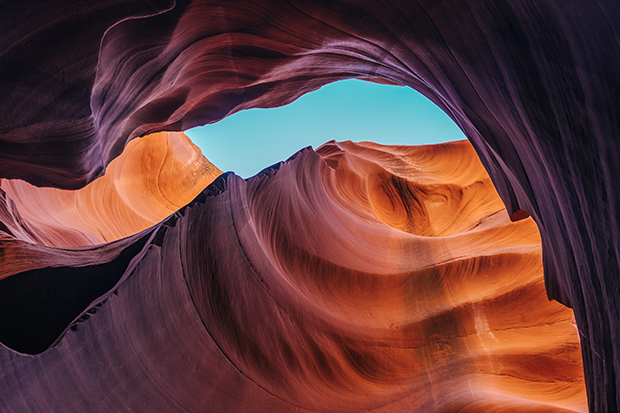
Abstract landscape photos make up a smaller portion of the larger landscape photography genre. This kind of photography really allows you to showcase your creativity and prioritizes the use of color, texture, line and composition.
Rock formations, light patterns, ripples on water, silhouettes and more can all make amazing abstract landscape scenes.
A wide-angle lens isn’t of much use in abstract landscapes, where it’s all about getting the smaller details instead of the bigger picture.
Cityscapes
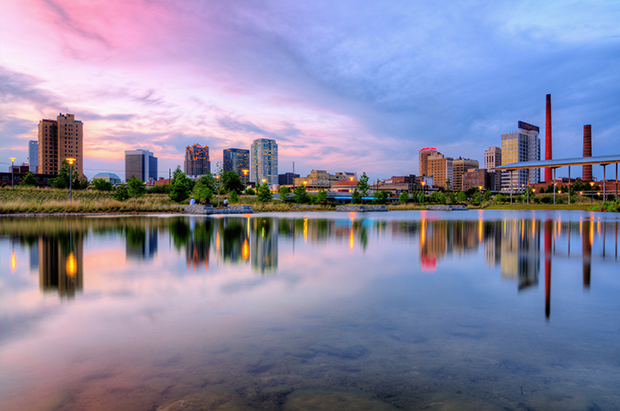
While some landscape photography purists say that urban skylines or landmarks don’t belong in the genre, many photographers believe otherwise.
Cityscapes can be every bit as fascinating to look at as a national park or mountains, and even smaller parts of that urban area can make good subjects. Take a look at the work of Todd Hido, for instance, whose landscape work features urban and suburban housing.
In the 1970’s, a group of photographers created an exhibition that became a key moment in landscape photography — New Topographics: Photographs of a Man-Altered Landscape. This exhibition showed images from photographers including Robert Adams, Lewis Baltz, Stephen Shore and Henry Wessel Jr.
The images all displayed streets, warehouses, suburban houses, city centers and industrial sites. In this town, country and city landscapes, the photographers captured an amazing beauty that had been altered in some way because of human action. In this way, cityscapes can take an environmental and political stance.
Equipment Needed to Photograph Landscapes
Now that you’ve got a better grasp of what landscape photography is and are sure it’s for you, we can talk about what you’ll need to make your own landscape images.
Different types of landscape photography require different types of equipment. Impressionist photography doesn’t require a tripod, for instance, but most of the other types do.
Here’s a quick rundown of the most essential equipment needed to photograph landscapes:
Camera
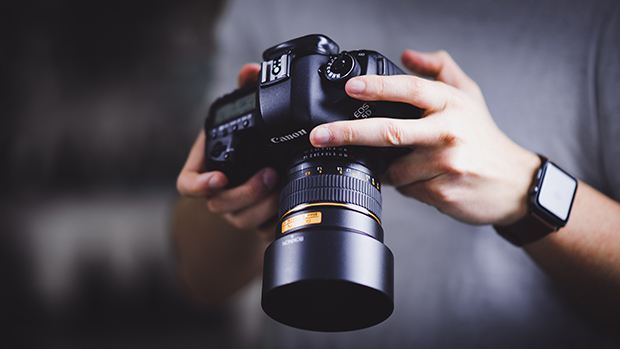
It goes without saying — you can’t shoot photographs without some kind of camera! But, the type you use doesn’t matter so much. You can photograph landscapes with a DSLR, a film camera, a mirrorless camera or even with your mobile phone camera.
You will need to learn some basic landscape camera settings like shutter speed, focal length, ISO and aperture to get the best out of your equipment, but these skills aren’t difficult to master with a bit of practice.
Creating a good landscape photo is so much more than the camera and lens you use. Your photograph should also be well-composed and draw the viewer in, using the natural landscape to frame the shot or negative space to create an impact.
Mirrorless cameras are slated to replace DSLR cameras in the future, but it is up to personal preference which type you use. A mirrorless camera has a full-frame sensor, but is much smaller and lighter than a DSLR. Of course, that lighter weight means the batteries tend to run down faster than in a DSLR.
Film cameras are also often used in landscape photography, especially medium and large-format film cameras. While these are difficult for beginners to start with, you may find you enjoy taking film photos. You could even get into developing and making prints in a darkroom for total control over your image production.
Weigh the pros and cons of each camera type, and try a few different ones if you can. Then, make your choice and learn your machine. The type of camera you have is much less important than knowing how to use it to the best of its abilities.
Lenses
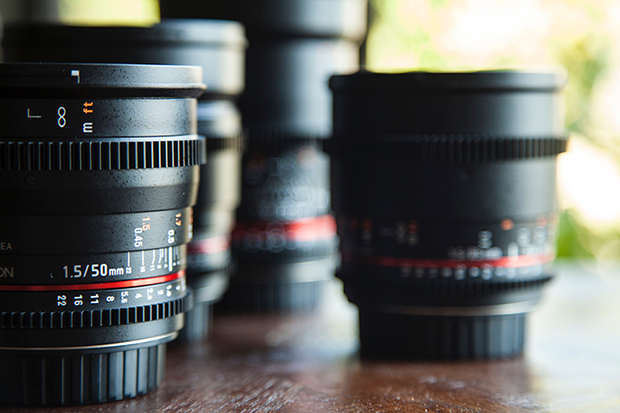
Of all the equipment needed to photograph landscapes, lenses are one of the biggest investments. A good lens is expensive, but it will last you a lifetime with proper care.
There are two main types of lenses: zoom and prime lenses. Zoom lenses allow you to change the focal length of the lens so you can get closer or further away from your subject by turning the lens barrel.
You should buy a decent zoom lens. If you can only afford one, buy a 24-100mm or as near to this as you can get. A 24-100mm zoom lens will allow you to capture wide-angle or closer with one lens.
Prime lenses, on the other hand, have a fixed focal length. That means you can’t turn the lens to zoom in or out. A wide angle 24mm, 35mm, 50mm, and 80mm prime lens are just some examples of prime lenses you can buy.
Primes tend to be cheaper than zoom lenses because they don’t have the extra moving parts, and they are usually sharper (and often have wider apertures), too.
Most landscape photographers have a selection of lenses from wide-angle (18mm or 24mm) up to 50mm or 80mm. Your lense choices will all depends on what you want to capture.
Tripod

If you only want to shoot impressionist, experimental landscape photography, you can get away with not owning a tripod. But, all other types of landscape photography need a tripod all, or at least some, of the time.
A tripod will hold your camera securely in place to let you take the shot without camera shake. Even minute movements of your hands will shake the camera and result in less-than-sharp photos.
For tack-sharp photos, you must use a tripod and a remote timer or shutter release cable. These devices allow you to activate the shutter without pressing the shutter button, which eliminates the risk of camera shake even further.
Tripods are also essential if you want to do long exposure photography, as your shutter speeds will be much slower. Slower speeds mean that the shutter remains open longer, which means the camera must remain absolutely steady. If not, your photos will come out blurry.
Good tripods are sturdy without being too heavy. If you are going to be walking through a lot of wilderness areas carrying your gear, a heavy tripod becomes a nuisance very quickly!
You should also think about getting a sandbag to secure your tripod to the ground on windy days.
Filters
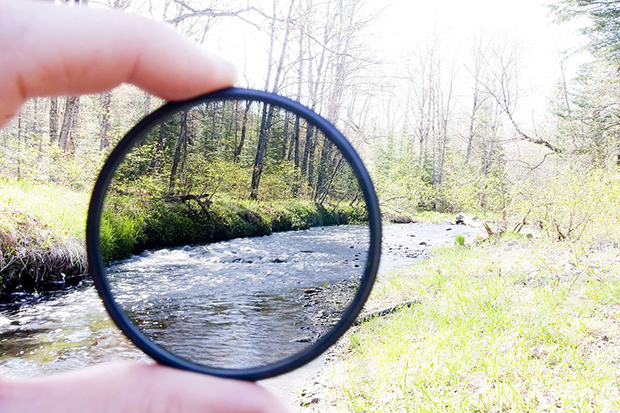
Many landscape photographers use filters over their lenses when shooting landscapes, but others don’t. While not an essential piece of equipment, filters can make it easier to capture your landscape photography. That being said, I have some and rarely use them. It’s all up to personal preference!
A lens filter is a piece of tinted glass or resin that covers the camera lens to cut the amount of light that reaches the camera sensor. Think of a filter as sunglasses for your camera!
Filters come in circular or rectangular shapes and in a variety of different strengths and colors. Circular filters screw on over your lens, while the rectangular types must fit in a special holder on your camera.
The darker a filter is, the more light it cuts out. This makes them useful for photographing landscapes with a mix of shadows and very bright areas.
For instance, the sky is often brighter than the landscape. If you don’t use a filter, the sky will become overexposed and lose detail if the land is well-exposed, or the sky will be properly exposed and the landscape will appear too dark. A graduated or polarizing filter will cut down the brightness of the sky without changing the exposure of the landscape too much.
Filters are also great for shooting waterfalls or seascapes where the shutter speeds are longer, as they eliminate overexposure problems.
Other Equipment

While many of these items aren’t essential, they will make your life much easier as a landscape photographer:
Spare camera batteries
It pays to have more than one battery for your camera — and make sure they’re fully charged! There’s not much worse than getting into your stride and taking great photographs only to have your battery die on you.
In cold weather your batteries will run down much quicker, so bear that in mind when shooting in the winter.
Plenty of memory cards
If you’re shooting in RAW format, which allows you more editing control later, your photos will take up more space on your memory card. Always have a minimum of 3 memory cards with at least 8GB space on each one.
As with batteries, running out of memory space while shooting is no fun at all!
Camera bag
A padded camera bag isn’t essential, but it makes life easier. A good camera bag has compartments to store your camera and accessories, is waterproof and should be easy to carry.
I like the backpack-style ones, as it leaves your hands free while wearing the bag. Others prefer a shoulder bag, so it’s down to personal preference.
Plastic bags
Plain, large plastic bags should be part of your camera gear in case you get caught in the rain. The more expensive DSLRs have waterproofing, but many do not, and you don’t want to ruin your camera and lenses.
Even if you have a camera bag, it is worthwhile putting your camera in plastic bags inside the camera bag if you are in heavy rain or snow to give an extra level of protection.
Lens cleaning cloths
You should clean the glass of your lens regularly with specialist cleaning cloths and solution, or with a lens pen. Always carry something in your bag for cleaning smudges and smears off your lenses while out and about.
Challenges in Landscape Photography

While landscape photography is one of the most popular and enjoyable types of photography, there are challenges that landscape photographers must overcome.
When you shoot in a photography studio, you control everything — the lighting, environment and all other variables. Mother nature isn’t as tolerant, and shooting outside means learning to overcome the obstacles that she puts in our way.
While this isn’t an exhaustive list, here are the main challenges in landscape photography:
<h3>Quality of light
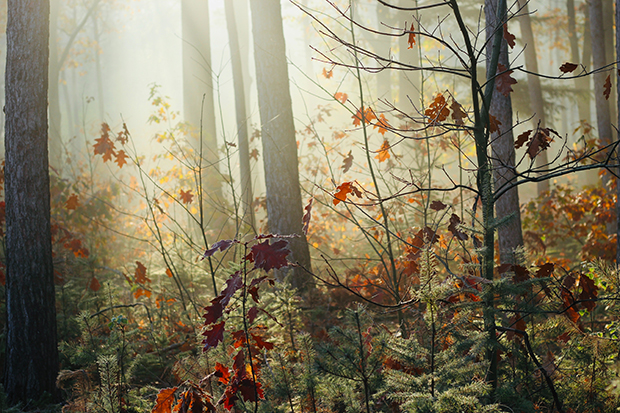
The light outside is ever-changing, which makes a scene look different depending on the time of day, the weather conditions and the season.
There are certain times of day and weather conditions that landscape photographers favor — and those that they try to avoid.
- Early morning and early evening: The hour after sunrise and the hour before sunset give a soft, golden light. The sun is low in the sky, and everything looks beautiful. This is known as the “golden hour” in photography, and many landscape photos are shot at these times.
- Mid-day: Photographers generally avoid mid-day, especially if it’s sunny outside. The sun is high in the sky at mid-day, and the contrast and shadows can be harsh. Shooting landscapes at this time can be done, but it needs a lot of careful thought.
- Dull, overcast skies: These aren’t popular with landscape photographers either, as they cast a soft, even grey light over everything, and there aren’t any interesting cloud formations. Outdoor portrait photographers often like this kind of light, though.
- Stormy, dramatic skies: Clouds and stormy weather make great subjects. If you can catch an apocalyptic sky, go for it!
- Mist and fog: It takes a bit of practice to get good shots in mist and fog, mainly because everything looks grey and lacks contrast. Once you’ve mastered this skill, you can make amazing mist and fog photos.
Different lighting conditions mean you need to adjust your shutter speed, aperture, and other settings to fit. You can get good results with auto mode (where the camera makes all the decisions). But, to get the best out of your landscape photography, you should find out how to use your camera in manual or semi-auto.
Learn how the exposure triangle works, and don’t be afraid to make mistakes as you practice.
General Exposure Issues

Getting the exposure right on landscape photography images can be tricky, so it’s a very common challenge. If you underexpose your photo, it’ll be too dark all over. If it’s overexposed, it’ll be too light.
When you use Auto Mode on a digital camera, you camera will use its own internal light meter to adjust its exposure settings. Most of the time, Auto Mode will get the exposure of the scene right.
Sometimes, though, your camera’s Auto Mode can be fooled. If your snow scenes come out grey instead of white, and dark scenes show too light, it’s likely the camera meter is to blame. When you understand more about exposure, you can compensate for this and correct the exposure by adjusting the settings.
Exposure Issues on Different Parts of the Same Image
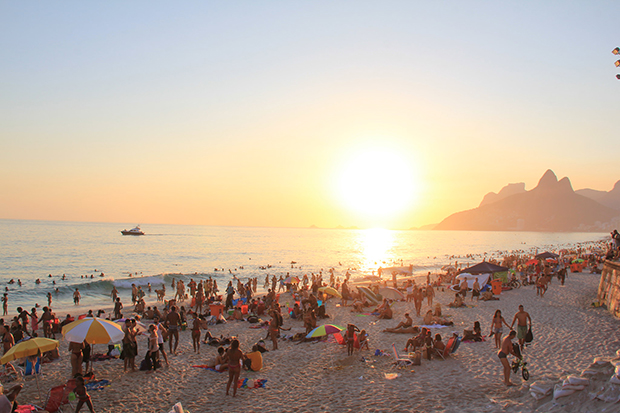
Landscape photographers sometimes have trouble achieving a consistent exposure throughout their image. Because the sky is typically much lighter than the landscape, it can come out too pale if you’ve set your exposure for the landscape. If you correctly expose the sky, parts of your landscape will now be too dark! What do you do?
You can easily remedy this problem by using a graduated filter, or a circular polarizing filter. Graduated filters start with darker glass at the top and get lighter toward the bottom. These allow you to expose correctly for the landscape and the sky at the same time by blocking light only at the top of the image.
Other ways you can get around this issue include shooting HDR images. HDR stands for High Dynamic Range, and it means you have to shoot at least three images of the same subject at different exposures: one underexposed, one correctly exposed, and one overexposed.
You can then use HDR imaging software to merge these images together, resulting in an image that shows all the details — from the brightest to the darkest — correctly exposed.
This is a very quick, simplistic explanation of HDR landscape photography, but there is plenty of information on creating HDR images on the internet. Like other photos, you can edit them to get the effect you want in post-production.
Some HDR images look very over-edited, and others have a more natural feel. Check out Trey Ratcliff for some vibrant and dramatic HDR landscape inspiration.
Best Landscape Photography Tutorials

You can always find more information about landscape photography on the internet. Probably the best sites to start with are those dedicated to photography, with lots of tutorials and photography tips. Alternatively, you can search on YouTube for video tutorials on photography for those who prefer to learn through watching.
It’s a good idea to get a grounding in the basics of photography and camera settings first before trying anything else. Tutorials and photography tips to look for include those that cover exposure, shutter speed, aperture, ISO, and white balance. Once you have started to understand these, you can move on to more interesting things!
Learning these basics just takes a little patience and time, but it will pay off in the long run. While browsing your favorite tutorial sites for photography tips, you may decide to learn about shooting great portraits too, or how to unleash your creativity with fine art photography. You never know what one thing may lead to!
It’s also worth learning how to post-process your photos so that they look their best. Cropping, straightening, color-correcting and adjusting contrast and sharpness can all be done in image editing software like Capture One, Photoshop and Lightroom, Luminar, ON1 and others.
While you can learn so much from tutorials, there’s no substitute for getting out there and learning by doing. The more you use your camera and get used to it, the better and more confident you will become.
One of the most valuable photography tips I was ever given was, “try not to get hung up on perfection.” If you do, you won’t enjoy your photography, and you may even consider giving it up.
We all make mistakes, and that’s how we learn. I still make plenty of mistakes with my photography, and I’ll no doubt continue to do so in the future!
Conclusion
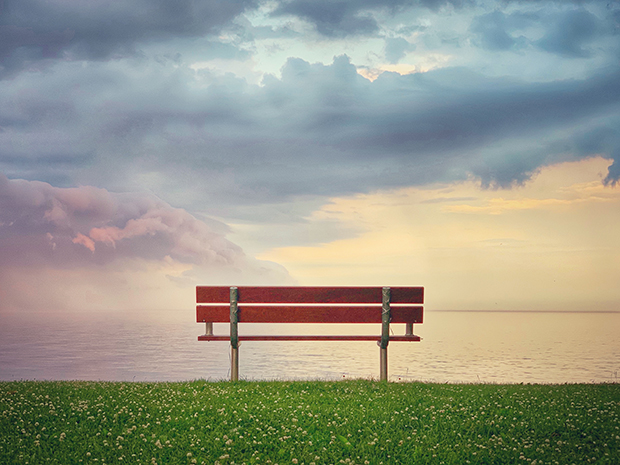
That’s about it for this introduction to landscape photography. Hopefully you learned some useful info and photography tips that will help you get out there with your camera and get started.
Take some time to research and learn from the many photography websites out there, and go out photographing as much as possible. The more you do it, the quicker your skills will improve.
If you enjoyed this article, don’t forget to join our mailing list for more photography articles. Follow us on Facebook and Twitter too to share your work with us!





